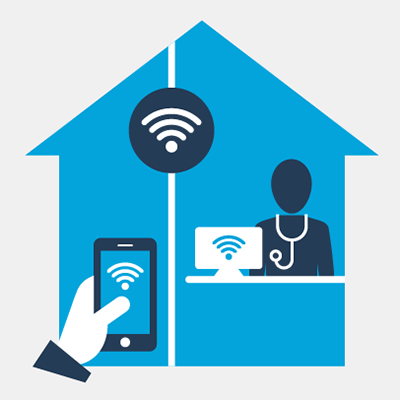Telehealth from the Field: Case Study Involving Remote Monitoring Problems

Even before the COVID-19 pandemic, the use of remote patient monitoring was expanding. The technologies offer many benefits, but they may also create potential malpractice risks. Consider the following case example and strategies that can help mitigate risks.
Case Example
During an annual physical, the physician recommended ambulatory electrocardiography for a patient with a history of prior cardiac arrhythmia. The physician told the patient he would receive the ambulatory monitor by mail and that the package would contain everything he needed.
About a week later, the monitoring package arrived. The patient was in the process of moving and set the package aside. Several weeks later, after completing the move, the patient found the box. He opened it, read the instructions, and applied the device. After a few hours, the device fell off. He reapplied it multiple times, but the device continued to fall off. After several calls with the device manufacturer, the patient gave up, tucked the device in the box, and mailed it back to the manufacturer.
A week later, the patient received a letter from the physician, stating that his monitoring results were normal. The patient—who was surprised to receive these results—followed up. During the discussion, the physician told him that the device manufacturer downloaded and evaluated the results and provided a report that the physician then shared with the patient. The physician was surprised to learn that the patient had not completed the monitoring period and the device had not performed as expected, but the results were still reported as normal. The patient lost confidence in both the physician and remote monitoring technology and did not return to the practice.
Patient Safety Strategies
Whether you have already implemented remote patient monitoring or are thinking about it, consider the following strategies:
- Use a deliberate process to evaluate potential monitoring devices.
- Determine if the equipment is classified as a medical device by the U.S. Food and Drug Administration (FDA). Often, FDA classification as a medical device is required for billing, and it is a sign that the device has been objectively evaluated.
- Ask the device manufacturer for a list of current clients and contact them to review their experiences with the company and the device.
- Schedule an in-person product demonstration and consider ease of use from the patient's perspective. Make sure that patient instructions are clear. Evaluate whether the device is manageable in terms of size, portability, and application.
In the case scenario, the device did not adhere properly to the patient's skin.
- Determine how the data will be collected, transmitted, and stored.
- Use a secure (encrypted) method for data collection, transmission, and storage. Data from remote patient monitoring devices are subject to privacy and security regulations.
- Use caution with applications that transmit data directly into the electronic health record (EHR). Determine the frequency and volume of data transmission. Test the process to confirm that the information populates appropriately and does not negatively affect EHR function.
- Determine who will review the data and how frequently, and verify what data will be incorporated into the patient's medical record. When patient information will be extracted, analyzed, and reported by a third party, it is incumbent on providers to ensure that the process is rigorous. How is the information parsed and interpreted? Is there a process for identifying and rapidly communicating critical or highly concerning results? Is there an internal quality review process?
In the case example, the data were stored in the device, which was returned to the manufacturer for extraction and reporting. When the physician followed up with the device manufacturer about the report, the manufacturer was unable to provide a satisfactory answer as to why the result was reported as normal when the entire reporting period had not been completed.
- Ensure the patient is ready to participate.
- Check with the patient periodically during the monitoring process to determine if the device was received and is in use. This also provides an opportunity to assess the patient's level of comfort and answer any questions.
- Advise patients to call the office about any device problems or concerns.
In the case example, the patient was planning to move. Since the patient's condition was stable, it may have been more convenient for him to delay the monitoring until after the move. Instead, the patient forgot about the monitor, delayed application for several weeks, and then experienced problems using the device.
Plan and Prepare
This case study highlights the importance of careful planning and preparation when incorporating remote technologies into the patient care services offered by a medical practice. Providers who recommend products and services to their patients have a responsibility to apply due diligence in confirming that the device manufacturer is reputable, the device is safe, and the information it produces is accurate and reliable. Once a decision is made to use remote technology, the next steps should be to develop appropriate use guidelines that include preparing patients, managing device concerns/troubleshooting, tracking results, and following up with patients.
